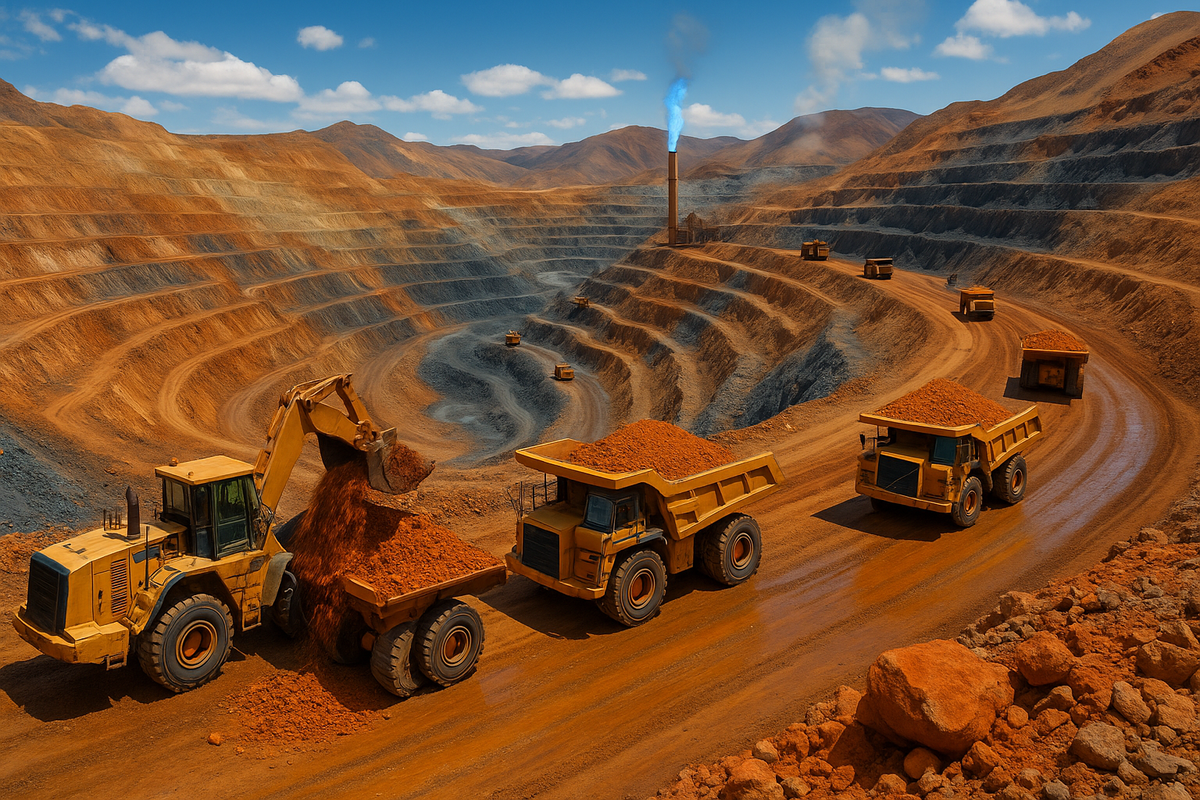
By Miika Makela | WBN News Vancouver | May 28, 2025
Subscribe to WBN News!
Copper remains a cornerstone of industrial and technological development, with a complex global supply chain connecting mines in Chile and Australia to refineries and manufacturers worldwide. As mining operations move deeper into the earth, the composition of copper deposits changes, affecting extraction and refining processes. This article examines the evolving nature of copper reserves, logistical challenges, trade dynamics, and geopolitical influences shaping the industry.
The Journey of Copper: From Mines to Market
Chile and Australia stand as dominant copper producers, providing a substantial share of the world’s supply. In Chile, extensive copper mining occurs in regions such as Antofagasta, while Australia’s deposits are primarily found in South Australia and Queensland. Once mined, copper ore undergoes crushing, grinding, and flotation processes before reaching smelting facilities, where impurities are removed and refined copper is produced for global markets.
Key consumers such as China, the United States, and the European Union rely on Chilean and Australian copper for industrial and technological applications. However, shifting deposit characteristics and deeper mining operations are altering extraction methods and refining requirements.
Changing Deposit Composition: From Oxide Cap to Sulfide Ores
Copper deposits evolve as mining progresses deeper into the earth. Near the surface, copper is typically found in oxide deposits, which are more accessible and easier to process. These deposits form through prolonged weathering and chemical reactions with atmospheric conditions, making oxide ores relatively simple to refine through hydrometallurgical processes such as heap leaching.
However, as miners extract deeper reserves, they encounter sulfide ores. Unlike oxide ores, sulfide deposits require more complex processing due to their chemical composition. Copper sulfide minerals, such as chalcopyrite, are commonly found in deeper geological formations, requiring flotation and pyrometallurgical refining techniques to extract usable copper.
This transition from oxide to sulfide deposits presents several challenges. Sulfide ores contain higher concentrations of associated minerals, such as iron, sulfur, and other impurities, making refining more intensive. Smelting processes must be adapted to handle these variations, often requiring additional steps to separate and purify copper efficiently.
Moreover, sulfide ores can lead to increased costs due to their energy-intensive processing requirements. Refineries must invest in advanced technologies to accommodate these changing raw material characteristics, ensuring copper remains a viable resource in global markets.
Logistical Hurdles in Copper Supply Chains
Transporting copper from mines to processing facilities and end users is a complex operation, with deeper mining exacerbating existing logistical challenges. The bulk nature of copper ore demands efficient freight solutions, including inland trucking and bulk carrier shipping.
However, port congestion, fluctuating fuel prices, and infrastructure limitations can create bottlenecks in supply chains. Chile’s mining operations benefit from well-developed transportation networks, ensuring a relatively smooth flow to international markets. Australia, on the other hand, faces logistical difficulties due to remote mine locations requiring extensive transport infrastructure before reaching export hubs.
The processing of sulfide ores also increases logistical demands. The complexity of transporting concentrates instead of raw ore requires specialized handling, adding another layer of supply chain intricacy. Mining and refining industries must optimize logistics to mitigate costs and maintain efficiency.
Trade Dynamics and Geopolitical Influences
Global copper markets are highly sensitive to trade policies, demand fluctuations, and geopolitical developments. China, the largest consumer of refined copper, significantly influences market trends. Shifts in Chinese industrial policies, infrastructure development plans, and economic strategies can impact copper prices and trade volumes.
Geopolitical tensions further complicate copper supply chains. Trade disputes, export restrictions, and government policy shifts in major producing nations can disrupt market stability. In Chile, changes to mineral rights and regulatory policies influence investment in copper mining projects, affecting supply security. Australia’s mining sector faces scrutiny over regulatory frameworks that could reshape global copper trade.
Additionally, countries seeking to reduce dependency on traditional copper suppliers are exploring new partnerships and refining capabilities, leading to evolving trade patterns. As nations invest in infrastructure to ensure secure copper supply chains, shifts in market dynamics will continue to shape the industry's trajectory.
Opportunities for a Resilient Future
While the transition from oxide to sulfide deposits presents operational challenges, it also drives technological innovation. Mining and refining companies are investing in advanced ore processing techniques to improve efficiency, reduce costs, and accommodate changing deposit characteristics.
Alternative extraction and refining strategies, including advancements in flotation and smelting technologies, are being explored to optimize copper recovery rates. Nations looking to strengthen supply chain resilience are developing new refining capabilities, fostering diversification in the global copper market.
Conclusion
The global copper supply chain is undergoing significant transformations, driven by changing deposit compositions, logistical demands, and geopolitical shifts. As mining operations move deeper into the earth, the transition from oxide to sulfide ores presents technical and financial challenges for the industry.
Despite these hurdles, advancements in refining techniques and logistical strategies offer pathways to maintain stable copper production. As industries continue to rely on copper for infrastructure and technology, stakeholders must refine their approaches to ensure long-term supply chain efficiency and stability.
Miika Makela, CFA
https://www.linkedin.com/in/miika-makela-cfa-24aa056/
#Copper Supply Chain #Mining Industry #Metals And Mining #Global Trade #Geopolitics #Copper Mining



